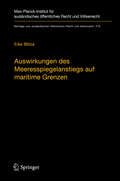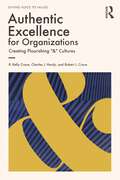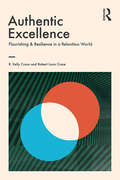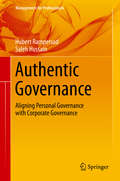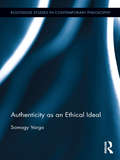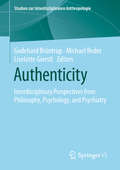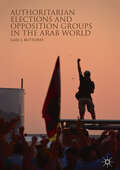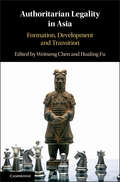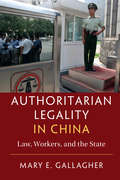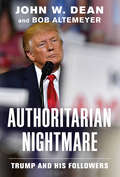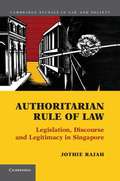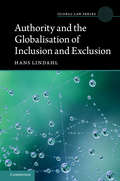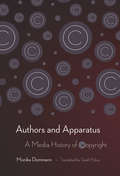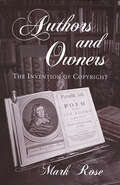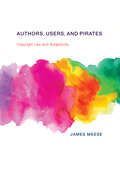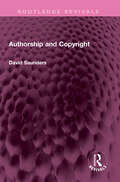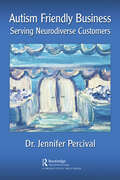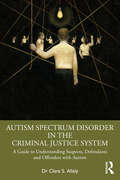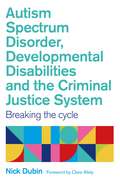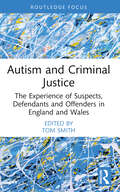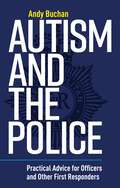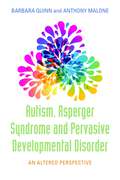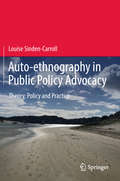- Table View
- List View
Auswirkungen des Meeresspiegelanstiegs auf maritime Grenzen (Beiträge zum ausländischen öffentlichen Recht und Völkerrecht #279)
by Eike BlitzaDas Buch geht der Frage nach, ob und inwiefern sich meeresspiegelinduzierte Veränderungen der Küstenlinien auch im Verlauf maritimer Grenzen widerspiegeln. Nach Untersuchung der maßgeblichen Vorschriften des Seerechtsübereinkommens (SRÜ) kommt die Arbeit zu dem Ergebnis, dass Veränderungen des Küstenverlaufs Auswirkungen auf maritime Grenzen haben können, das Ausmaß der Veränderung allerdings von der konkreten Art der Grenze und deren Entfernung zur Basislinie abhängt. Global betrachtet birgt die Beweglichkeit der Seegrenzen ein erhöhtes Konfliktpotential, denn sie wird Unsicherheit über bestehende Grenzverläufe verursachen. Seegrenzen sollten daher dauerhaft stabilisiert werden. Der Autor belegt, dass dies auf Grundlage des geltenden Rechts nicht sinnvoll gelingen wird. Nur durch Änderung des SRÜ oder der Herausbildung von neuem Völkergewohnheitsrecht ließe sich verhindern, dass das internationale Seerecht die Folgen des durch den Meeresspiegelanstieg bedingten Landverlusts nicht noch verschlimmert.
Authentic Excellence for Organizations: Creating Flourishing "&" Cultures (Giving Voice to Values)
by R. Kelly Crace Charles J. Hardy Robert L. CraceAuthentic Excellence for Organizations explores organizational culture from a values-based perspective and applies the psychological principles of values-based flourishing to organizations. Integrating the principles of Giving Voice to Values (GVV) and Authentic Excellence (AX), this book provides a process that details how organizations can harness their team’s inherent wisdom to flourish through the relentless pace and pressure of today’s world. Moving beyond team-building strategies and programming, this book helps develop confidence in managing the tensions inherent in organizations. It explores: The difference between moral values and personal values; How both can be effectively expressed and managed in organizations; The possibilities of shifting from a fear-based culture of "Or" to an inclusive and values-centred culture of "&"; and How to practically create flourishing "&" cultures using the GVV model. How to create an organizational culture that effectively sustains "&s" like competitive & collaborative, productive & fulfilled, and innovation & tradition. This book is intended for organizational leaders, members, and HR managers looking to develop strong and thriving teams. It also aligns with required or recommended reading for secondary or undergraduate courses that explore values, leadership, organizational development and performance, decision making, ethics, and entrepreneurship.
Authentic Excellence: Flourishing & Resilience in a Relentless World (Giving Voice to Values)
by R. Kelly Crace Robert Louis CraceNever before have the pressures of a comparative and competitive world impacted on our sense of wellbeing, particularly among young adults. Building on the principles of Giving Voice to Values, which honors the complexity and difficulty of leading with our values, this book addresses the unique challenges faced by young adults. It provides a clear process that details how to harness natural wisdom to flourish through the relentless pace and pressure of today’s world. Moving beyond mere values clarification, Authentic Excellence helps the reader to develop a deeper relationship with their values and confidently express them, and builds effective coping skills to manage the relentless noise of our comparative and competitive world. Authentic Excellence answers five primary questions: How are young adults affected by this world of relentless change and pressure? Why are young adults vulnerable to a plateau that can negatively affect their resilience? What is the difference between fear-based excellence and authentic excellence and what role do values play in this distinction? What is necessary to move beyond fear-based excellence and why is it so hard? How do you train a deeper level of effectiveness that includes more consistent productivity, fulfillment and resilience?
Authentic Governance: Aligning Personal Governance with Corporate Governance (Management for Professionals)
by Hubert Rampersad Saleh HussainOver the past years, we have heard and read plenty about how executives should behave more responsibly in the light of corporate governance. Despite all these efforts, many implementations of corporate governance provide no protection from potentially catastrophic ethical failures. This book emphasizes the introduction of a new corporate governance blueprint for addressing these concerns in a more authentic, organic and holistic way. It is a roadmap toward a high-performance ethical culture. By way of this innovative system, Dr. Hubert Rampersad and Saleh Hussain, MBA, are launching a revolutionary concept that actively has human capital embedded in corporate governance in a manner that creates a stable basis for the personnel's trustworthiness, integrity, and engagement and ethical corporate excellence. Featuring numerous case examples and practical tools and exercises, this book will help the reader learn to: Develop, implement, and cultivate authentic personal governance and corporate governance effectively Create conditions for sustainable corporate governance Increase their personal effectiveness Develop their personal integrity effectively and become a better human being Develop ethical personal leadership Develop a highly engaged workforce, based on high ethical standards Create a high-performance culture and enhance the competitiveness of their organization Create conditions for an organizational climate marked by self-guidance, creativity, passion, and ethical behavior Develop a culture in which personal integrity and business ethics is a way of life
Authenticity as an Ethical Ideal (Routledge Studies in Contemporary Philosophy)
by Somogy VargaAuthenticity has become a widespread ethical ideal that represents a way of dealing with normative gaps in contemporary life. This ideal suggests that one should be true to oneself and lead a life expressive of what one takes oneself to be. However, many contemporary thinkers have pointed out that the ideal of authenticity has increasingly turned into a kind of aestheticism and egoistic self-indulgence. In his book, Varga systematically constructs a critical concept of authenticity that takes into account the reciprocal shaping of capitalism and the ideal of authenticity. Drawing on different traditions in critical social theory, moral philosophy and phenomenology, Varga builds a concept of authenticity that can make intelligible various problematic and potentially exhausting practices of the self.
Authenticity: Interdisciplinary Perspectives from Philosophy, Psychology, and Psychiatry (Studien zur Interdisziplinären Anthropologie)
by Michael Reder Godehard Brüntrup Liselotte GierstlToday, authenticity is considered an essential part of manifold interpersonal relationships, actions, and agreements. Authenticity’s association with sincerity, honesty, and reliability not only normatively charges the term in the context of social coexistence, but also makes it a demand which we impose on ourselves: The success of our lives is measured decisively by whether we live in harmony with our own convictions, wishes and needs. In philosophy, authenticity has also become the focus of interest, both in the context of the mechanisms of self-knowledge, as well as of personal development.The anthology aims to expand the cooperation across disciplines, in order to develop a comprehensive and profound understanding of authenticity, not by over-simplifying the highly complex subject, but by approaching the underlying concept from different scientific perspectives.
Authoritarian Elections and Opposition Groups in the Arab World
by Gail J. ButtorffThis book examines how opposition groups respond to the dilemma posed by authoritarian elections in the Arab World, with specific focus on Jordan and Algeria. While scholars have investigated critical questions such as why authoritarian rulers would hold elections and whether such elections lead to further political liberalization, there has been comparatively little work on the strategies adopted by opposition groups during authoritarian elections. Nevertheless, we know their strategic choices can have important implications for the legitimacy of the electoral process, reform, democratization, and post-election conflicts. This project fills in an important gap in our understanding of opposition politics under authoritarianism by offering an explanation for the range of strategies adopted by opposition groups in the face of contentious elections in the Arab World.
Authoritarian Legality in Asia: Formation, Development and Transition
by Hualing Fu Weitseng ChenA cluster of Asian states are well-known for their authoritarian legality while having been able to achieve remarkable economic growth. Why would an authoritarian regime seek or tolerate a significant degree of legality and how has such type of legality been made possible in Asia? Would a transition towards a liberal, democratic system eventually take place and, if so, what kind of post-transition struggles are likely to be experienced? This book compares the past and current experiences of China, Hong Kong, South Korea, Japan, Taiwan, Singapore, and Vietnam and offers a comparative framework for readers to conduct a theoretical dialogue with the orthodox conception of liberal democracy and the rule of law.
Authoritarian Legality in China: Law, Workers, and the State
by Mary E. GallagherCan authoritarian regimes use democratic institutions to strengthen and solidify their rule? The Chinese government has legislated some of the most protective workplace laws in the world and opened up the judicial system to adjudicate workplace conflict, emboldening China's workers to use these laws. This book examines these patterns of legal mobilization, showing which workers are likely to avail themselves of these new protections and find them effective. Gallagher finds that workers with high levels of education are far more likely to claim these new rights and be satisfied with the results. However, many others, left disappointed with the large gap between law on the books and law in reality, reject the courtroom for the streets. Using workers' narratives, surveys, and case studies of protests, Gallagher argues that China's half-hearted attempt at rule of law construction undermines the stability of authoritarian rule. New workplace rights fuel workers' rising expectations, but a dysfunctional legal system drives many workers to more extreme options, including strikes, demonstrations and violence.
Authoritarian Nightmare: Trump and His Followers
by John W. Dean Bob AltemeyerOne of American political history's most famous figures, who knows what it's like to stand up to an authoritarian White House, joins with an expert on authoritarianism to take a piercing look at how someone like Donald Trump and his followers achieved power—and what they might do to keep it ... John Dean, of Watergate fame, knows what it's like to work for a strong-willed, vindictive president. But even Richard Nixon, says Dean, didn't have the raw lust for power that Donald Trump has. Nor the lack of skill. Nor the deep, willful ignorance of our democracy. So how did such a person achieve power? Suspecting the answer lay in understanding Trump's base constituency, Dean has partnered with Bob Altemeyer, a professor of psychology whose expertise is the study of authoritarianism, to see why Trump's base is so faithful to him, no matter what he does. Why do evangelical Christians support him, for example, despite his well-documented sexual predations? Why do so many working class Americans support him, despite the way he works against their interests? Why do facts and logic not change their minds? By drawing on some psychological diagnostic tools (such as the "Power Mad Scale" and the "Con Man Scale") and looking at other historic authoritarians and their movements, Dean and Altemeyer offer not only an eye-opening revelation of how Trump and his followers have gotten where they have . . . but a road map to where they may go next.
Authoritarian Rule of Law
by Jothie RajahScholars have generally assumed that authoritarianism and rule of law are mutually incompatible. Convinced that free markets and rule of law must tip authoritarian societies in a liberal direction, nearly all studies of law and contemporary politics have neglected that improbable coupling: authoritarian rule of law. Through a focus on Singapore, this book presents an analysis of authoritarian legalism. It shows how prosperity, public discourse, and a rigorous observance of legal procedure have enabled a reconfigured rule of law such that liberal form encases illiberal content. Institutions and process at the bedrock of rule of law and liberal democracy become tools to constrain dissent while augmenting discretionary political power - even as the national and international legitimacy of the state is secured. With China seeing lessons to be learned in Singapore, as do any number of regimes looking to replicate Singapore's pairing of prosperity and social control, this book offers a valuable and original contribution to understanding the complexities of law, language, and legitimacy in our time.
Authority and the Globalisation of Inclusion and Exclusion (Global Law Series)
by Hans LindahlProtracted and bitter resistance by alter- and anti-globalisation movements shows that the globalisation of law transpires as the globalisation of inclusion and exclusion. Humanity is inside and outside global law in all its possible manifestations. But how is this possible? How must legal orders be structured, such that, even if we can now speak of law beyond state borders, no emergent global legal order is possible that does not include without excluding? Is an authoritative politics of boundaries possible that neither postulates the possibility of realising an all-inclusive global legal order nor accepts resignation or political paralysis in the face of the globalisation of inclusion and exclusion? These pressing questions guide this book, opening up a vast field of enquiry that demands integrating sociological, doctrinal and philosophical perspectives and insights.
Authors and Apparatus: A Media History of Copyright
by Monika DommannCopyright is under siege. From file sharing to vast library scanning projects, new technologies, actors, and attitudes toward intellectual property threaten the value of creative work. However, while digital media and the Internet have made making and sharing perfect copies of original works almost effortless, debates about protecting authors' rights are nothing new. In this sweeping account of the evolution of copyright law since the mid-nineteenth century, Monika Dommann explores how radical media changes—from sheet music and phonographs to photocopiers and networked information systems—have challenged and transformed legal and cultural concept of authors' rights.Dommann provides a critical transatlantic perspective on developments in copyright law and mechanical reproduction of words and music, charting how artists, media companies, and lawmakers in the United States and western Europe approached the complex tangle of technological innovation, intellectual property, and consumer interests. From the seemingly innocuous music box, invented around 1800, to BASF's magnetic tapes and Xerox machines, she demonstrates how copyright has been continuously destabilized by emerging technologies, requiring new legal norms to regulate commercial and private copying practices. Without minimizing digital media's radical disruption to notions of intellectual property, Dommann uncovers the deep historical roots of the conflict between copyright and media—a story that can inform present-day debates over the legal protection of authorship.
Authors and Owners: The Invention of Copyright
by Mark RoseThe notion of the author as the creator and therefore the first owner of a work is deeply rooted both in our economic system and in our concept of the individual. But this concept of authorship is modern. Mark Rose traces the formation of copyright in eighteenth-century Britain—and in the process highlights still current issues of intellectual property. Authors and Owners is at once a fascinating look at an important episode in legal history and a significant contribution to literary and cultural history.
Authors in Court: Scenes from the Theater of Copyright
by Mark RoseMark Rose uses case studies to show how gender and gentility have influenced the self-presentation of authors in court and how the personal styles, public personas, and histories of novelists, dramatists, poets, photographers, and cartoonists have influenced the development of legal doctrine around issues of copyright.
Authors, Users, and Pirates: Copyright Law and Subjectivity (The Information Society Series)
by James MeeseAn examination of subjectivity in copyright law, analyzing authors, users, and pirates through a relational framework.In current debates over copyright law, the author, the user, and the pirate are almost always invoked. Some in the creative industries call for more legal protection for authors; activists and academics promote user rights and user-generated content; and online pirates openly challenge the strict enforcement of copyright law. In this book, James Meese offers a new way to think about these three central subjects of copyright law, proposing a relational framework that encompasses all three. Meese views authors, users, and pirates as interconnected subjects, analyzing them as a relational triad. He argues that addressing the relationships among the three subjects will shed light on how the key conceptual underpinnings of copyright law are justified in practice.Meese presents a series of historical and contemporary examples, from nineteenth-century cases of book abridgement to recent controversies over the reuse of Instagram photos. He not only considers the author, user, and pirate in terms of copyright law, but also explores the experiential element of subjectivity—how people understand and construct their own subjectivity in relation to these three subject positions. Meese maps the emergence of the author, user, and pirate over the first two centuries of copyright's existence; describes how regulation and technological limitations turned people from creators to consumers; considers relational authorship; explores practices in sampling, music licensing, and contemporary art; examines provisions in copyright law for user-generated content; and reimagines the pirate as an innovator.
Authorship and Copyright (Routledge Revivals)
by David SaundersFirst published in 1992, Authorship and Copyright traces the history of constructions of authorship as a legal reality. It offers an alternative to the two mainstream interpretations that have traditionally been assigned to authorship: the Romantic dialectical ‘birth of the author’ or the language-based post-structuralist ‘death of the author.’ Saunders examines the shortcomings of both schemes by arguing that they impose an arbitrary philosophical direction on the history of authorship and the law of copyright. Saunders addresses the issues relating to copyright and the construction of authorship as a legal status. Combining information and polemic, the author explores such matters as the historical and theoretical relations of copyright and the droit moral, the aestheticization of the law and the juridification of aesthetics, and the argument that authorship as a legal reality is a historically contingent and variable arrangement that cannot be separated from its cultural and juridical context. This book will be of interest to students of law, literature and philosophy.
Autism Friendly Business: Neurodiverse Customers (Autism Friendly)
by Jennifer PercivalDesigned as a guidebook for leaders at the beginning of their journey embracing neuroinclusion, Autism Friendly Business: Neurodiverse Customers will provide business owners, executives, managers, team members, and associates the tools to integrate strategies and techniques that will enhance their business, while improving the delivery of a quality experience for all. Autistic individuals often experience barriers when engaging with businesses. This book provides solutions and examples on how leaders can remove obstacles to develop supportive and inclusive environments.
Autism Spectrum Disorder in the Criminal Justice System: A Guide to Understanding Suspects, Defendants and Offenders with Autism
by Dr Clare AllelyThis book focuses on autism spectrum disorder (ASD) in the criminal justice system. Rather than being the perpetrators of offending, individuals with ASD are more likely to be the victim of crime. However, there is nevertheless a small subset of individuals with ASD who do offend, and this book provides an in-depth understanding of how certain features of ASD may provide the context of vulnerability to engaging in a number of types of offending behaviours. Chapters focus on arson or fire-setting; cybercrime (e.g., hacking); online sexual offending such as the viewing of indecent child imagery; offline sexual offending; violent crime; stalking; terroristic behaviour (including radicalisation and extremism); bestiality or zoophilia and also extreme violence such as mass shooting and serial homicide. This book also outlines the ways in which a defendant with ASD may present in court and how they may exhibit behaviour which could be misinterpreted and perceived negatively leading to an unfair trial. Lastly, it discusses the need to identify the impact that ASD can have on the capacity to form the requisite criminal intent and offer appropriate court adaptions to support them during court proceedings. This book is ideal for criminal defense lawyers and practitioners in psychology, psychiatry, and social work as well as policy makers and reformers.
Autism Spectrum Disorder, Developmental Disabilities, and the Criminal Justice System: Breaking the Cycle
by Nick DubinFor autistic people who find themselves facing a criminal charge, understanding how the features of autism may have contributed to their behaviour can be vital context for their defence. In this insightful book, Nick Dubin explores how and why autistic people get caught up in the criminal justice system. He delves into what steps can be taken to prevent autistic people committing crimes and what should be done to ensure their fair and appropriate treatment if they are charged with a crime. It covers everything from prevention to the aftermath of sentencing, including available counselling and therapy. Nick's personal experience and meticulous research shows that criminal justice can be an oppressive system that misunderstands and stigmatizes autistic people, especially low-risk individuals and those with less criminal responsibility.
Autism and Criminal Justice: The Experience of Suspects, Defendants and Offenders in England and Wales (Routledge Contemporary Issues in Criminal Justice and Procedure)
by Tom SmithThis collection presents a summary of current knowledge regarding autistic suspects, defendants and offenders in the criminal justice system of England and Wales. The volume examines the interaction between each stage of the criminal justice process and autistic individuals accused or convicted of crime, considering the problems, strengths, and possibilities for improving the system to better accommodate the needs of this vulnerable category of neurodiverse individuals. By explicating the core issues in this important but disparate area of study in a single place, the collection facilitates understanding of and engagement with knowledge for a wider audience of relevant stakeholders, including criminal justice practitioners, policy makers, academics and clinicians. It also incorporates key recommendations for improvement, thereby clarifying the urgent need for substantive change in policies and practices. The ultimate goal is to both improve the treatment and experience of autistic people subjected to criminal justice processes; and produce fairer, more appropriate systemic outcomes. While focused on the criminal justice system of England and Wales, the work will be valuable for researchers and policy-makers working in similar systems, as well as those interested in neurodiversity more generally.
Autism and the Police: Practical Advice for Officers and Other First Responders
by Andrew BuchanThis is a practical guide for police officers and other first responders written by an autistic retired policeman, designed to demystify autistic behaviours and improve the treatment of autistic people caught up in the criminal justice system. Police officers and other emergency services are the first to arrive at the scene of an incident and it is vital they can recognise autistic behaviours and respond accordingly to avoid any escalation. This book lays out how to identify whether someone could be autistic and how officers can interact with them effectively and sensitively. Based on the author's many years of experience as a police officer it covers common scenarios such as stop and search, restraint and transportation, interviews and detention. For each potential encounter the book provides strategies, examples and tips to assist police in interacting safely and fairly with autistic people. In addition to police interactions, the book explains how to best respond to and assist autistic people through the Criminal Justice System and beyond.
Autism, Asperger Syndrome and Pervasive Developmental Disorder
by Barbara Quinn Anthony MaloneAutism Spectrum Disorder, or ASD, is the umbrella term used to describe a whole family of related conditions. Within this group, there is a subgroup of conditions known as PDD (NOS) - Pervasive Developmental Disorder (not otherwise specified) - which do not quite meet the diagnostic criteria of Autism or Asperger Syndrome. Written specifically for parents, this fully-updated second edition sets out what it means for a child to be diagnosed with ASD, PDD (NOS), autism or Asperger Syndrome, and explains where parents should go from there. The authors describe the signs and symptoms of each condition, what a diagnosis means, how a child fits into the diagnostic terminology, and what the diagnostic procedures involve. Associated disorders such as Rett Syndrome, Childhood Disintegrative Disorder and OCD are reviewed, and the authors describe the various treatments, therapies, and educational approaches available. The book also includes new information on medication and on the evolving concept of diagnosis, as well as a list of frequently asked questions and new interviews with parents of children on the autism spectrum. Accessible, informative, and supportive, this book is an essential guide for parents of children with an autism spectrum disorder.
Autistic Community and the Neurodiversity Movement: Stories from the Frontline
by Steven K. KappThis open access book marks the first historical overview of the autism rights branch of the neurodiversity movement, describing the activities and rationales of key leaders in their own words since it organized into a unique community in 1992. Sandwiched by editorial chapters that include critical analysis, the book contains 19 chapters by 21 authors about the forming of the autistic community and neurodiversity movement, progress in their influence on the broader autism community and field, and their possible threshold of the advocacy establishment. The actions covered are legendary in the autistic community, including manifestos such as “Don’t Mourn for Us”, mailing lists, websites or webpages, conferences, issue campaigns, academic project and journal, a book, and advisory roles. These actions have shifted the landscape toward viewing autism in social terms of human rights and identity to accept, rather than as a medical collection of deficits and symptoms to cure.
Auto-ethnography in Public Policy Advocacy: Theory, Policy and Practice
by Louise Sinden-CarrollThis book explores how public policy advocacy can be used to approach policy issue identification, resolution or, at the least, support the management of wicked policy issues. By describing how this type of advocacy draws on participatory action research, including ethnographic and auto-ethnographic models, this book offers a tool for public policy consumer advocates on how to apply the Human Capabilities Approach to address presenting public policy issues worldwide. By applying these models to the situation of prisoners with hearing loss in New Zealand’s prisons, it identifies multiple causal factors for quality-of-life-limiting marginalization, e.g. social barriers (e.g. disability discrimination); environmental limitations (e.g. geographical and those introduced by incarceration); and individual responses in line with negative attitudes – both social and political, including the State’s denial of prisoners’ right to democratic participation by revoking their right to vote in general elections after sentencing. In addition, two other areas, namely blood safety and broadcast media captioning, are highlighted, showing that the skill of auto-ethnography is transferrable and can be applied to ensure effective consumer advocacy for a diverse range of issues that affect marginalized sectors.
